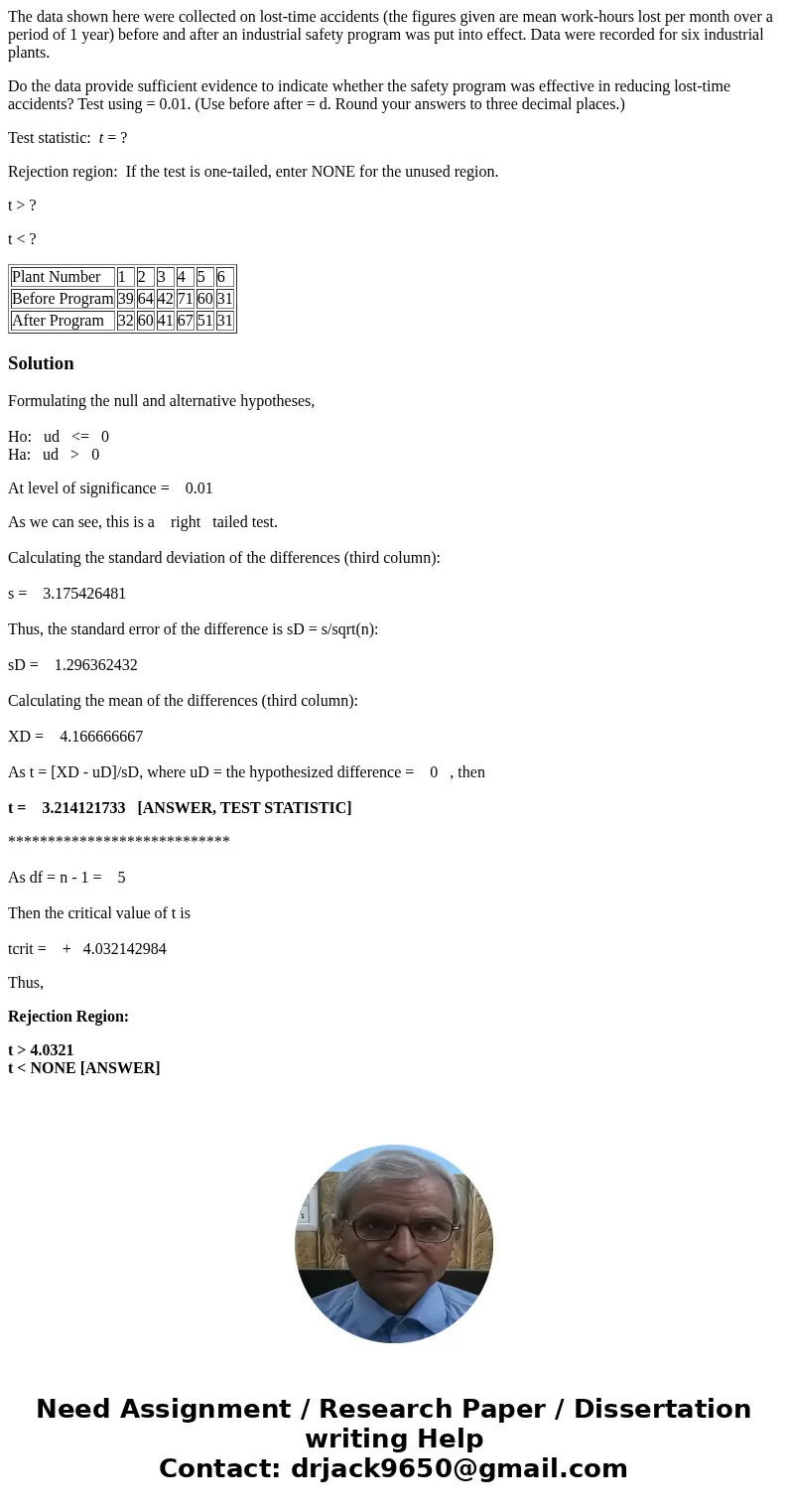The data shown here were collected on losttime accidents the
The data shown here were collected on lost-time accidents (the figures given are mean work-hours lost per month over a period of 1 year) before and after an industrial safety program was put into effect. Data were recorded for six industrial plants.
Do the data provide sufficient evidence to indicate whether the safety program was effective in reducing lost-time accidents? Test using = 0.01. (Use before after = d. Round your answers to three decimal places.)
Test statistic: t = ?
Rejection region: If the test is one-tailed, enter NONE for the unused region.
t > ?
t < ?
| Plant Number | 1 | 2 | 3 | 4 | 5 | 6 |
| Before Program | 39 | 64 | 42 | 71 | 60 | 31 |
| After Program | 32 | 60 | 41 | 67 | 51 | 31 |
Solution
Formulating the null and alternative hypotheses,
Ho: ud <= 0
Ha: ud > 0
At level of significance = 0.01
As we can see, this is a right tailed test.
Calculating the standard deviation of the differences (third column):
s = 3.175426481
Thus, the standard error of the difference is sD = s/sqrt(n):
sD = 1.296362432
Calculating the mean of the differences (third column):
XD = 4.166666667
As t = [XD - uD]/sD, where uD = the hypothesized difference = 0 , then
t = 3.214121733 [ANSWER, TEST STATISTIC]
****************************
As df = n - 1 = 5
Then the critical value of t is
tcrit = + 4.032142984
Thus,
Rejection Region:
t > 4.0321
t < NONE [ANSWER]

 Homework Sourse
Homework Sourse